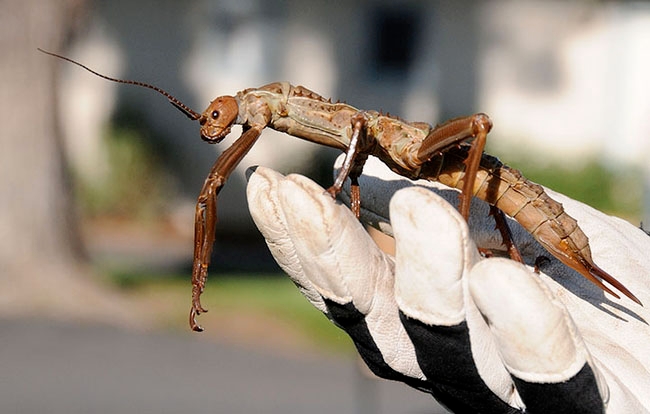- Author: Kathy Keatley Garvey
When the UC Davis Department of Entomology and Nematology hosts its "bug activities" at Briggs Hall during the 110th annual UC Davis Picnic Day on Saturday, April 20, one of the most popular is maggot art.
Children and adults alike create maggot art by using plastic forceps to dip a live maggot into water-based, non-toxic paint. They then watch it--or guide it--to make the drawing they're seeking.
The result: It's suitable for framing (or at least a spot on the refrigerator door).
Rebecca O'Flaherty, a former graduate student of UC Davis forensic entomologist Robert "Bob" Kimsey, coined the educational teaching curriculum, "Maggot Art," back in 2001 when she was studying at the University of Hawaii and rearing blowflies for her forensic research.
Then, asked to create an activity to draw the interest of elementary school students, she came up with "Maggot Art." She also wanted a way to generate interest and respect for forensic entomology,
It quickly drew national interest. The CSI television show featured one of her works, “Ancient Offering,” which hung on the permanent set in Gil Grissom's office. O'Flaherty also exhibited her work at art shows, including a two-month exhibition at the Capital Athletic Club, Sacramento, in 2007.
Today, maggot art activities occur sporadically throughout the country. The Entomological Society of America acknowledged O'Flaherty here. "The basic premise is dipping prepuparial blow fly larvae (Diptera: Calliphoridae) into non-toxic ink and then placing them on a piece of paper or file card and letting them crawl around to create an abstract picture. Different larvae are used in different colours to create the picture. Rebecca O'Flaherty first demonstrated this at a North American Forensic Entomology Association Meeting many years ago, and it is a popular activity and many youtubes can be viewed to see how it works."
Sometimes the young artists get quite attached to a maggot and ask an event coordinator or parent if they can take it home. (Nobody ever gets a "yes!")
(For a complete list of bug activities at Briggs Hall, see the UC Davis Entomology and Nematology website. This year the Bohart Museum of Entomology display and live petting zoo also will be at Briggs. The Bohart headquarters in the Academic Surge Building will be closed on Picnic Day)
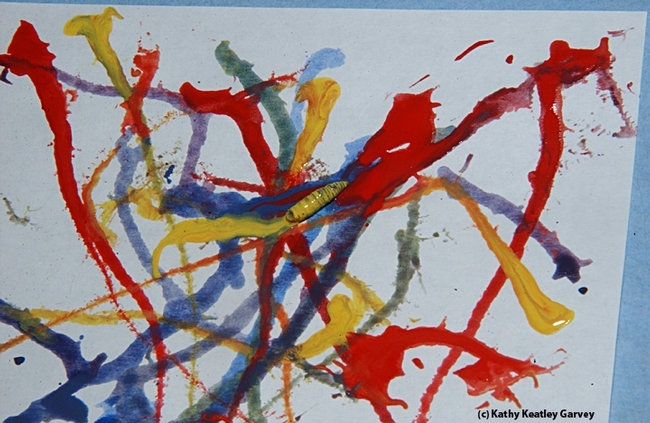
- Author: Kathy Keatley Garvey
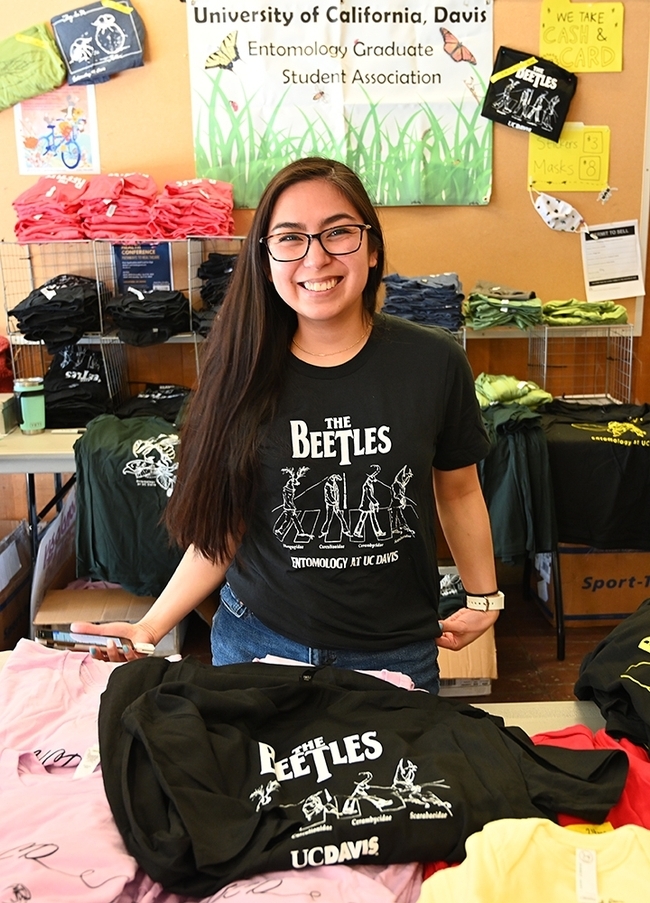
Well, it wouldn't be a picnic at all!
The UC Davis Department of Entomology and Nematology (ENT) is planning scores of displays and activities at Briggs Hall for the 110th annual campuswide UC Davis Picnic Day, to take place Saturday, April 20.
Think ants, bees, beetles, butterflies, flies, cockroaches, maggots, mosquitoes, nematodes, spiders and scorpions.
And more.
This year, all of the entomology exhibits, including those at the Bohart Museum of Entomology, will be at Briggs Hall. (The Bohart Museum headquarters in the Academic Surge Building will be closed on Picnic Day.)
Hours? From 9 a.m. to 5 p.m. The Bohart Museum's pop-up tent in front of Briggs, featuring insect specimens and an insect petting zoo, will be open from noon to 4 p.m.
The entomology displays traditionally draw some 3000 attendees, said the ENT co-chairs, doctoral student Grace Horne of the Emily Meineke lab, and faculty member and forensic entomologist Robert "Bob" Kimsey. It's all free and family friendly.
Among the crowd pleasers are the cockroach races, maggot art, stick insects, and the Bug Doctor booth. The doctor is always in!
New to the line-up is the “I IUV Bugs," an exhibit about plant-insect interactions under ultraviolet light. The "glowing bugs exhibit" is the brainchild of Horne and primarily designed by the Meineke lab, "especially (doctoral student) Marielle Hansel Friedman," Horne said. "We will have plants from the UC Davis Arboretum Teaching Nursery and local/pet-trade arthropods which glow under ultraviolet light. With this exhibit, we seek to highlight the interplay between light, color, and species interactions."
Doctoral student Veronica Casey of the Shahid Siddique lab designed the new nematode exhibit. Carla-Cristina "CC" Melo Edwards of the Geoffrey Attardo lab is coordinating the new medical entomology display. "The bumble bee observation hive is unfortunately not ready for the spotlight this year," Horne said.
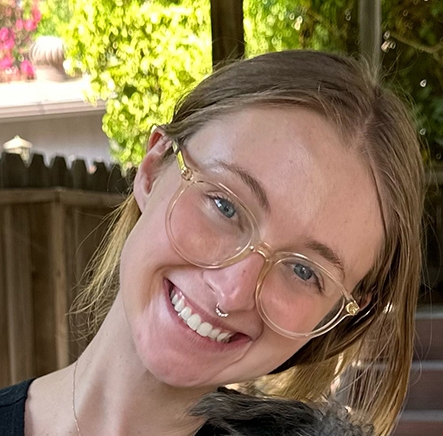
Bug Doctor
Briggs Hall Entryway
Graduate students will answer questions about insects. What's that bug? Attendees are encouraged to bring an insect or photo for identification.
Cockroach Races
Front of Briggs Hall
American cockroaches, Periplaneta americana, from Bob Kimsey's forensic lab, race on a specially made track, while roach fans cheer for their favorites. (Sometimes the athletes are named for faculty, friends or bystanders.)
Medical Entomology
122 Briggs Hall
Carla-Cristina "CC" Melo Edwards of the Geoffrey Attardo lab is coordinating the medical entomology display. Her research focuses on investigating the physiological mechanisms underlying pyrethroid resistance in Aedes aegypti (the yellow fever mosquito).
Diversity of Arachnids
122 Briggs Hall
Doctoral student Emma Jochim of the Jason Bond lab is coordinating an exhibit she created last year to display the diversity of arachnids, such as vinegaroons, whip spiders, tarantulas, and scorpions. "We'll have live animals and fact sheets that will give a general overview of their diversity, behavior, and habitat," Jochim said. "I'll also bring some curated specimens to show what goes into creating a scientific collection and talk about why collections are important for understanding biodiversity. "
Maggot Art
Briggs Courtyard
Artists--children and adults alike--create maggot art by dipping a live maggot into water-based, non-toxic paint. It's suitable for framing (or at least a spot on the refrigerator door). This event will close at 3 p.m. this year (last year it was at 5 p.m.)
Dr. Death
122 Briggs Hall
Forensic entomologist Robert Kimsey will display and discuss his work in his "Dr. Death" booth. Last year Kimsey pin-mounted and identified flies from various cases and research efforts, and displayed studies on the sequence of development of individual maggots, calling attention to the development and sequence of communities of insect maggots. "By these means, approximations about how long a person has been dead can be made," he told the crowd.
Entomology at UC Davis
122 Briggs Hall
Displays of insects, including bees, ants and more. Graduate students, faculty and emeriti will staff the tables.
Bohart Museum of Entomology
Front of Briggs Hall
A pop-up tent, staffed by the Bohart Museum, will include stick insects (walking sticks) and Madagascar hissing cockroaches. "We are excited to be part of the bigger department's offerings," said Tabatha Yang, education and outreach coordinator. Give-aways are also planned.
Fly-Tying
Briggs Hall courtyard
Fly Fishers of Davis will show attendees how to tie a fly. The recipients take home the flies.
Insect-Themed T-Shirt Sales
Briggs Hall entryway
Members of the Entomology Graduate Student Association (EGSA), led by president Mia Lippey, will be selling their popular insect-themed t-shirts, including The Beetles. The T-shirt, EGSA's all-time best seller, is a take-off of the cover of The Beetles' Abbey Road alum. However, instead of the Beatles crossing the road in a single file, four beetles (family names Phengogidae, Curculionidae, Cerambycidae and Scarabaeidae) do so.
Mosquito Control Booth
Entrance to Briggs (below front steps)
Sacramento-Yolo Mosquito and Vector Control District will be providing information on mosquitoes, answering questions, and handing out give-a-ways, including mosquito repellent.
UC Statewide Integrated Pest Management (UC IPM)
Briggs Hall Courtyard
“We plan to have many of our usual materials on display and will be giving out the live lady beetles (aka ladybugs) again,” said urban and community IPM educator Lauren Fordyce. “We purchase them from a local garden center. In addition to that, we plan to have a prize wheel that adults and kids can spin, answer a question, and win a prize if they answer correctly. We may also have temporary insect tattoos to give away.”
Ranked Third in the Country. The UC Davis Department of Entomology and Nematology is ranked third among “The Best Entomology Colleges in the United States for 2024" by universities.com. The department includes 24 active and 19 retired faculty; 28 graduate students (five in the master's degree program and 23 in the doctoral degree program); 47 undergraduate entomology majors (based on the Office of Academic Support and Instructional Services (OASIS) Student Reports); and a staff comprised of 27 academics (non-faculty), 24 career, and 56 student assistants. Professor and chair of the department is molecular geneticist and physiologist Joanna Chiu.
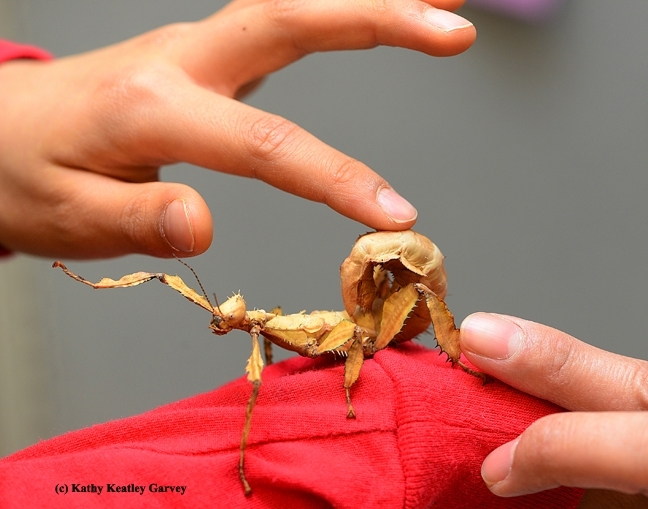
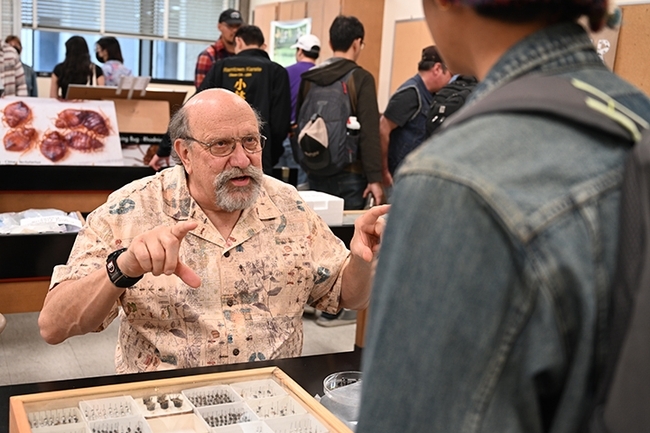
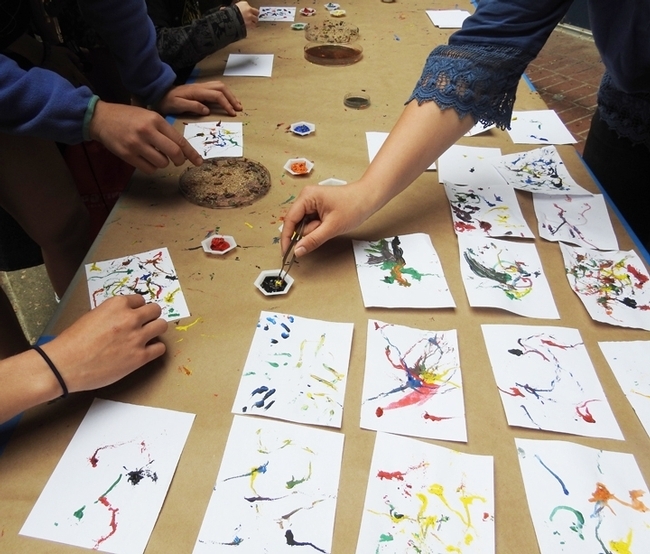
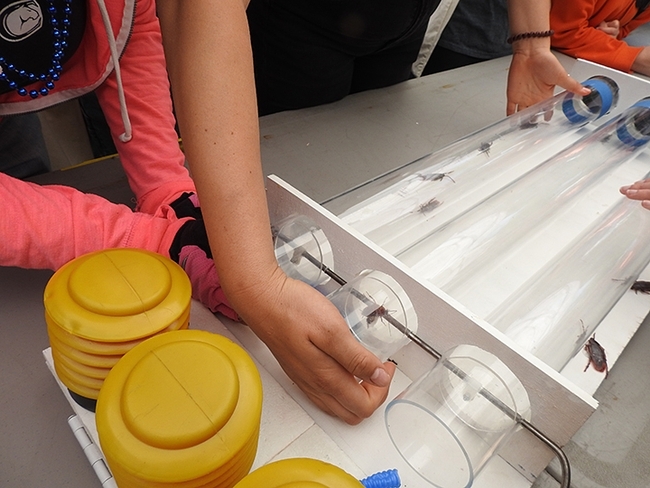
- Author: Kathy Keatley Garvey
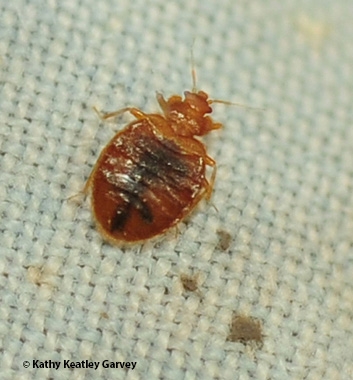
The open house set from 1 to 4 p.m., Saturday, Sept. 23 in Room 1124 of the Academic Surge Building, 455 Crocker Lane, UC Davis. It's free and family friendly and parking is also free. It's an opportunity for attendees to learn more about the "nuisance insects," and ask questions.
The line-up, as of today:
- Lynn and Bob Kimsey of the UC Davis Department of Entomology and Nematology faculty. Lynn, a hymenopterist, is a UC Davis distinguished professor who teaches general entomology and the biodiversity of California insects and serves as the director of the Bohart Museum, and Bob is a forensic entomologist, specializing in public health entomology; arthropods of medical importance; zoonotic disease; biology and ecology of tick-borne pathogens; tick feeding behavior and biochemistry.
- Carla-Cristina "CC" Melo Edwards, a first-year doctoral student in the laboratory of medical entomologist-geneticist Geoffrey Attardo, associate professor of entomology, UC Davis Department of Entomology and Nematology. She will share her expertise on mosquitoes and show specimens.
- Moriah Garrison, senior entomologist and research coordinator with Carroll-Loye Biological Research (CLBR). She is scheduled to show live ticks and mosquitoes and field questions.
- Educators from the Sacramento-Yolo Mosquito and Vector Control District. They will discuss mosquitoes and their program
- Nazzy Pakpour, UC Davis alumna, Novozymes scientist and author of Please Don't Bite Me
- Jeff Smith, curator of the Bohart Museum's ;Lepidoptera (butterflies and moths) collection. He will display butterfly specimens collected globally. Also on the "Lep crew" are Bohart volunteers Greg Kareofelas and Brittany Kohler.
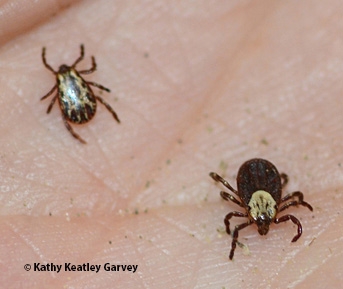
Petting Zoo. A popular attraction is the live petting zoo; visitors are encouraged to hold or get acquainted with live Madagascar hissing cockroaches and stick insects
Family Arts and Crafts Activity. The event will be held outside and will highlight two collecting techniques, said Tabatha Yang, education and outreach coordinator.
- Clear Packing Tape Art. "Clear packing tape is a good way to collect small, hard-to-see insects," Yang said. "Glitter will mimic small insects like fleas or bed bugs. Putting the tape on white paper makes it easy to look at them under a microscope and for this craft it will make a pretty card."
- Making insect collecting or "kill" jars. Participants are asked to bring a recycled jar. "This should be a clean and dried glass jar with a wide, metal top--think jam, pickle, peanut butter jars. Four to 16-ounce jars work well. We will have some on hand as well, but recycling is good! We will fill the bottom with plaster of paris and let it dry and teach people how to use it properly, using something like nail polisher remover containing ethyl acetate as the killing agent. A UC Davis Department of Entomology and Nematology video explains the procedure: https://youtu.be/s8yCzFGzbn8?si=71sNmA5l8NyP1zj0
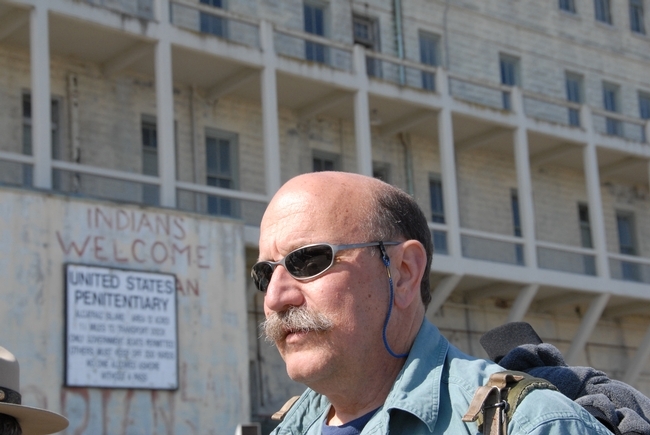
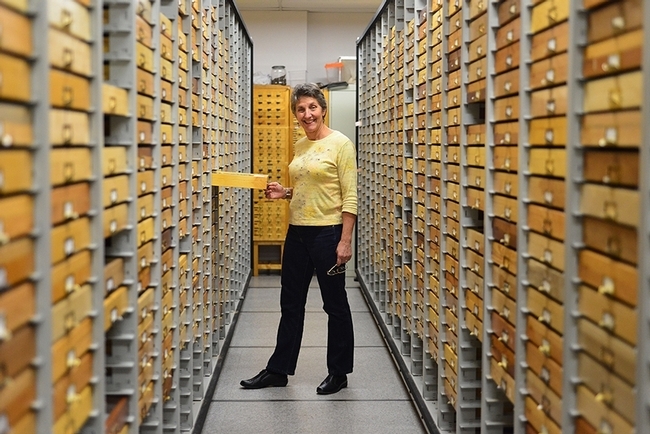
- Author: Kathy Keatley Garvey
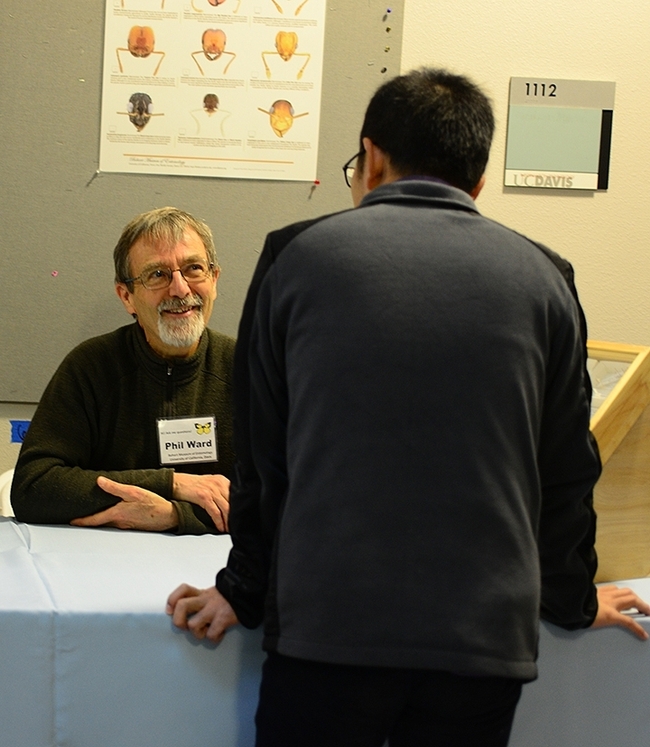
The Bohart Museum of Entomology has scheduled three open houses between now and Saturday, July 22.
The first open house is themed "Ants!" It's set from 1 to 4 p.m., Sunday, May 21. The Phil Ward ant lab, UC Davis Department of Entomology and Nematology, is planning the event.
The second open house, "Insects and Forensics," featuring forensic entomologist Robert "Bob" Kimsey, aka "Dr. Bob" of the UC Davis Department of Entomology and Nematology, will be from 1 to 4 p.m. on Saturday, June 3.
The third open house, and the last of the 2022-23 academic year, is "Night at the Museum," showcasing moths and flies and more. It's from 7 to 11 p.m., Saturday, July 22.
The open houses are free and family friendly. Parking is also free.
The Bohart Museum, directed by UC Davis distinguished professor Lynn Kimsey, houses a global collection of eight million insect specimens, plus the petting zoo and a gift shop stocked with insect-themed books, posters, jewelry, t-shirts, hoodies and more.
Dedicated to "understanding, documenting and communicating terrestrial arthropod diversity," the Bohart Museum, founded in 1946, is named for UC Davis professor and noted entomologist Richard Bohart. The insect museum is open to the public Mondays through Thursdays, from 8 a.m. to noon, and 1 to 5 p.m.
More information is pending.
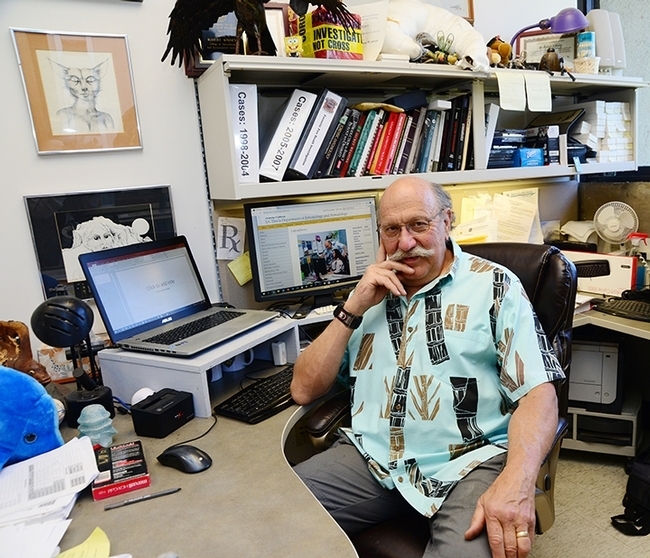
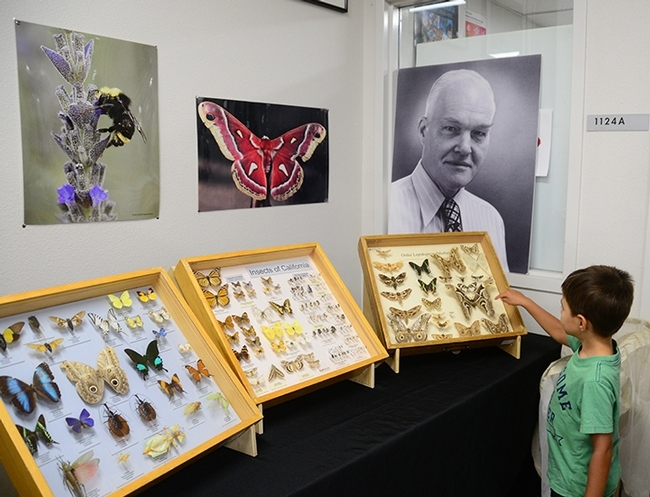
- Author: Kathy Keatley Garvey
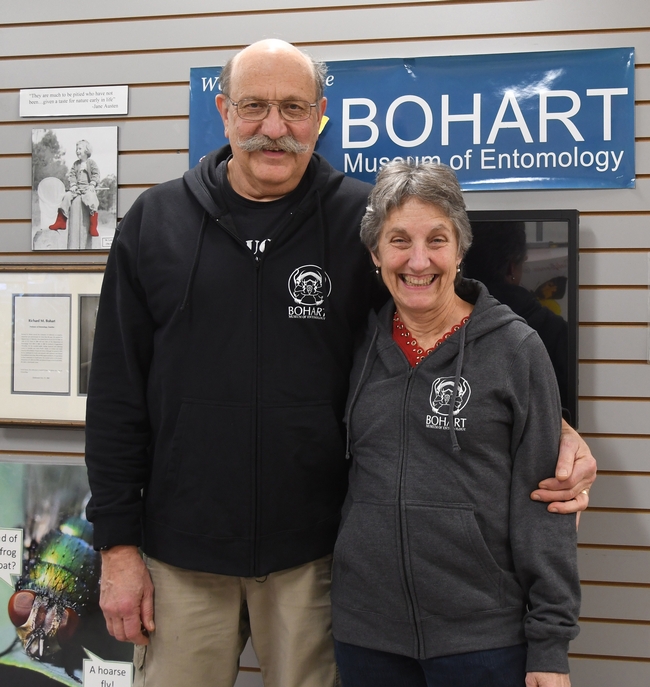
No?
Well, a newly described bacteria species now carries the last name of a husband-wife team: Lynn and Robert "Bob" Kimsey of the UC Davis Department of Entomology and Nematology.
Bob, a forensic entomologist, and Lynn, a hymenopterist and director of the Bohart Museum of Entomology, recently welcomed a joint namesake: Chryseobacterium kimseyorum.
It's a species found more than a decade ago inside the gut of a stick insect housed in the Bohart Museum of Entomology petting zoo.
“We've had a few things named after us but never bacteria--that's a first,” Lynn related.
Our story begins more than a decade ago when then UC Davis doctoral student Matan Shelomi, now an associate professor of entomology at National Taiwan University, Taiwan, was studying the digestive physiology of the stick and leaf insects, Phasmatodea, for his Ph.D, pursued under the guidance of his major professor, Lynn Kimsey. He isolated and cultured bacteria from the guts and cages of the stick insects. Some of the species seemed new to science, but Shelomi had neither the time nor the resources to prove it then.
He stored the microbes inside the deep freezers of the Phaff Yeast Culture Collection, UC Davis Department of Food Science and Technology.
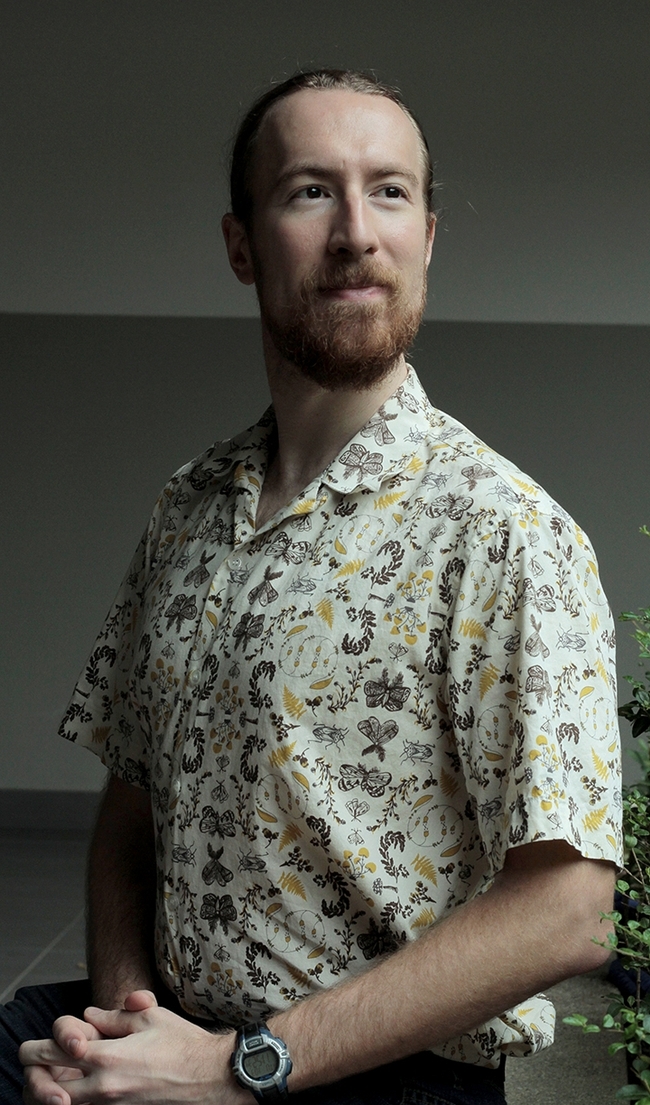
"Thankfully, I kept all my notes from graduate school," said Shelomi, "so I was able to check and see which strains I had flagged as possibly new species. When I saw one of them was the same genus as the new microbe found in Taiwan, I realized this was an opportunity to describe them both together." So Shelomi emailed Kyria Boundy-Mills, curator of the Phaff Collection, “who had my old specimen revived and shipped across the Pacific.”
Analysis confirmed two new species. The result: A research article published April 19 in the International Journal of Systemic and Evolutionary Microbiology. The title:“Chryseobacterium oryctis sp. nov., Isolated from the Gut of the Beetle Oryctes rhinoceros, and Chryseobacterium kimseyorum sp. nov., Isolated from a Stick Insect Rearing Cage.”
Han named his species after the beetle he found it in. Shelomi named his species (which he found in Eurycantha calcarata, commonly known as the "Giant New Guinea Stick Insect” or “Thorny Devil Stick”) after his former bosses. The suffix -orum in kimseyorum indicates that the name honors both Kimseys. “Officially one cannot name a microbe after more than one person, but there is precedent, so the (journal) editors allowed it. My grad student wanted to name her microbe after her dog, BaBa, but the editors did not allow that. Spoil-sports!”
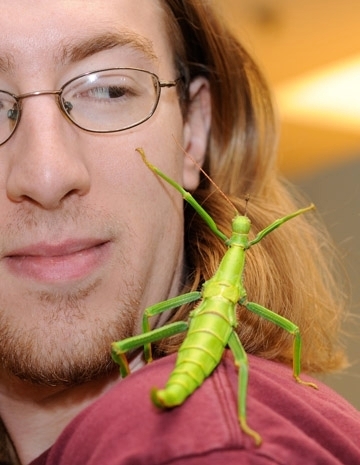
Tabatha Yang, education and outreach coordinator of the Bohart Museum, relayed the news to a tour group visiting the insect museum on April 20. “I just used this story today with a tour group,” she told Shelomi. “I mentioned how your student was denied her dog's name. I love how this ties the Bohart and the Phaff Yeast collection together and then California and Taiwan.”
As for the stick insect, “It's pretty aggressive for a walking stick,” Lynn Kimsey said, noting that Andy Engilis, curator of the UC Davis Museum of Wildlife and Fish Biology, told her about his work in Papua New Guinea. “These walking sticks would actually chase rodents out of their burrows and take over the burrows to rest in,” she related. “That's pretty tough for a walking stick.”
Meanwhile, the Kimseys are enjoying their new namesake. LynnKimsey already has seven other species named for her:
- Mystacagenia kimseyae Cambra & Wasbauer 2020 (spider wasp)
- Oligoaster kimseyae Soliman 2013 (tiphiid wasp)
- Exaerate kimseyae Oliviera 2011 (orchid bee)
- Spilomena kimseyae Antropov 1993 (solitary wasp)
- Manaos kimseyae Smith (argid sawfly)
- Spintharina kimseyae Bohart 1987 (cuckoo wasp)
- Neodryinus kimseyae Olmi 1987 (dryinid wasp)
Bob Kimsey has as at least two species named for him: Acordulacera kimseyi Smith, 2010 (sawfly) and Grandiella kimseyi Summers & Schuster (mite).
Shelomi, a Harvard University graduate who received his doctorate from UC Davis in 2014, served as a National Science Foundation postdoctoral fellow at the Max Planck Institute for Chemical Ecology, Germany for two years before accepting a faculty position in 2017 at National Taiwan University.
Shelomi returned to UC Davis in 2017 to present a seminar on "Revelations from Phasmatodea Digestive Track Transcriptomics,” to the department.
